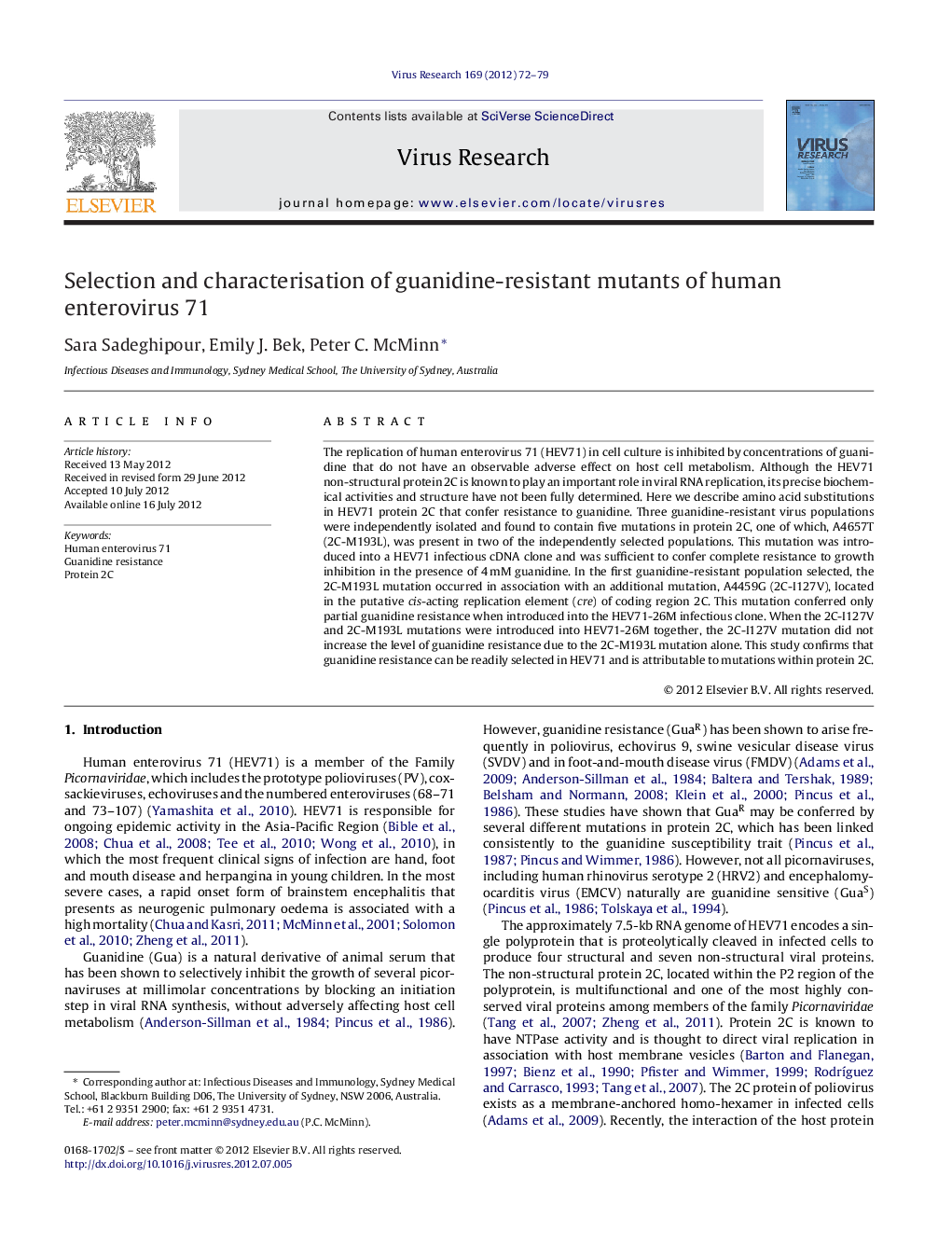| Article ID | Journal | Published Year | Pages | File Type |
|---|---|---|---|---|
| 6143103 | Virus Research | 2012 | 8 Pages |
The replication of human enterovirus 71 (HEV71) in cell culture is inhibited by concentrations of guanidine that do not have an observable adverse effect on host cell metabolism. Although the HEV71 non-structural protein 2C is known to play an important role in viral RNA replication, its precise biochemical activities and structure have not been fully determined. Here we describe amino acid substitutions in HEV71 protein 2C that confer resistance to guanidine. Three guanidine-resistant virus populations were independently isolated and found to contain five mutations in protein 2C, one of which, A4657T (2C-M193L), was present in two of the independently selected populations. This mutation was introduced into a HEV71 infectious cDNA clone and was sufficient to confer complete resistance to growth inhibition in the presence of 4Â mM guanidine. In the first guanidine-resistant population selected, the 2C-M193L mutation occurred in association with an additional mutation, A4459G (2C-I127V), located in the putative cis-acting replication element (cre) of coding region 2C. This mutation conferred only partial guanidine resistance when introduced into the HEV71-26M infectious clone. When the 2C-I127V and 2C-M193L mutations were introduced into HEV71-26M together, the 2C-I127V mutation did not increase the level of guanidine resistance due to the 2C-M193L mutation alone. This study confirms that guanidine resistance can be readily selected in HEV71 and is attributable to mutations within protein 2C.
⺠Guanidine-resistant HEV71 populations contained mutations in protein 2C. ⺠A 2C-M193L mutation was present in two of the guanidine-resistant HEV71 populations. ⺠The 2C-M193L mutation was introduced into a HEV71 infectious cDNA clone. ⺠The 2C-M193L mutation was sufficient to confer guanidine resistance upon HEV71.
